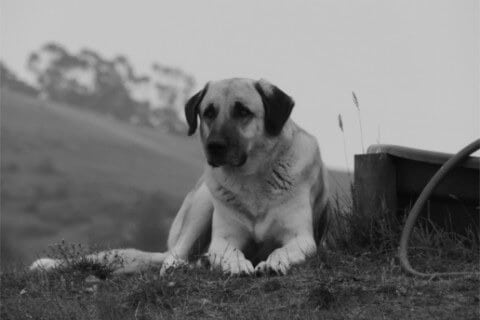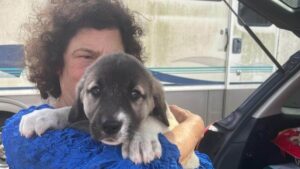
Janis Rosenthal | Chevaliers du Roland
Janis Rosenthal of Chevaliers du Roland shares decades of experience breeding vigilant, agile Anatolian Shepherd livestock guardians.
Home » Meet The Breeds » Anatolian Shepherd Dog

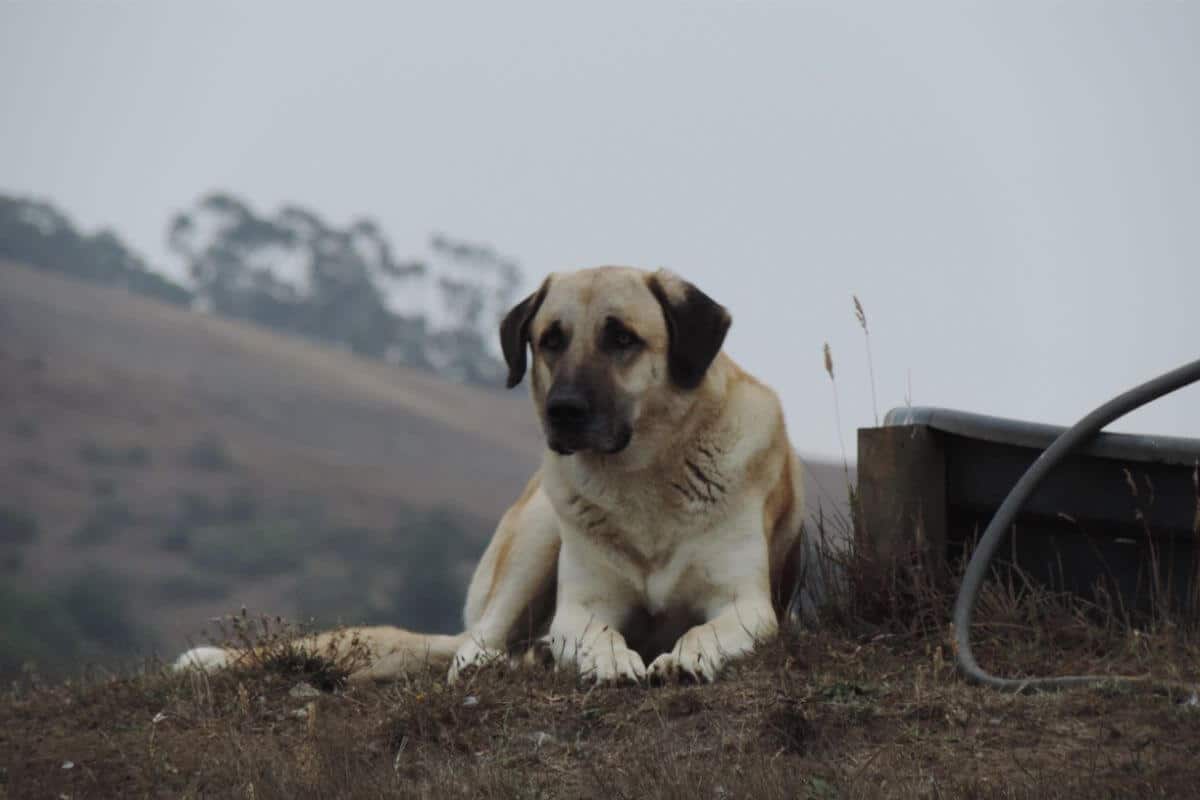
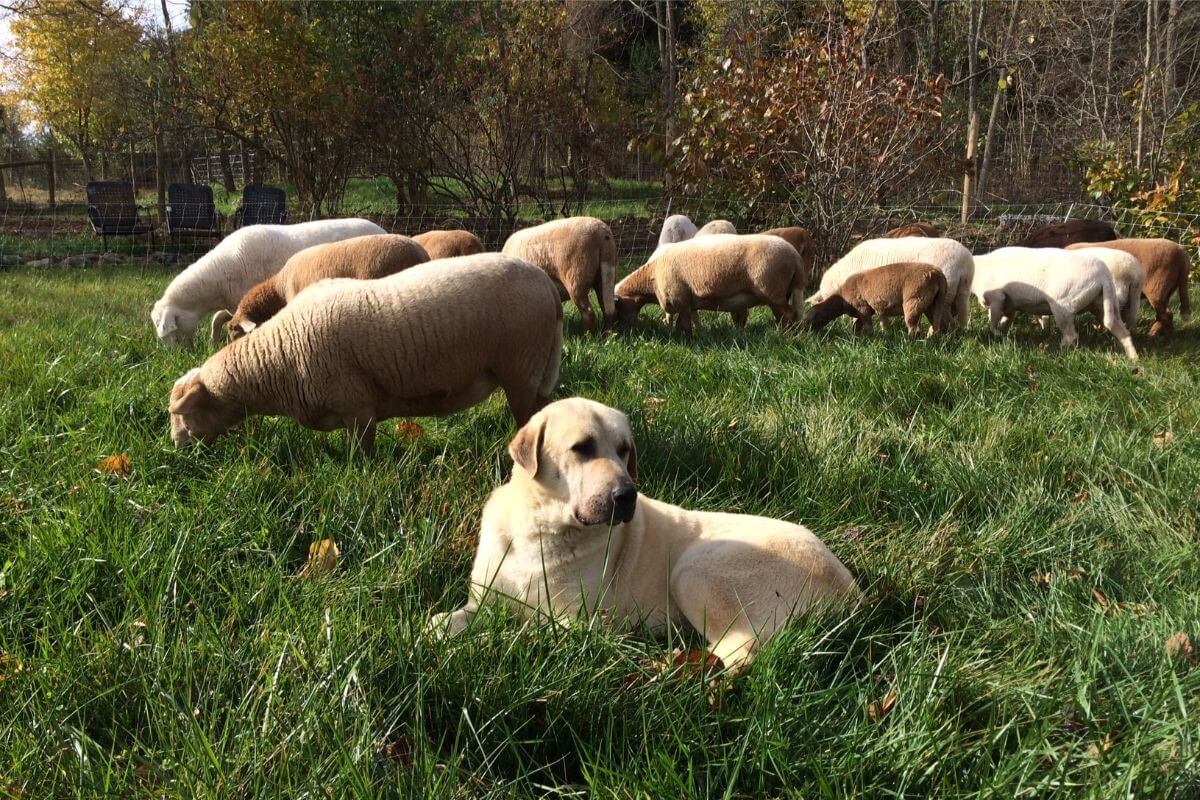
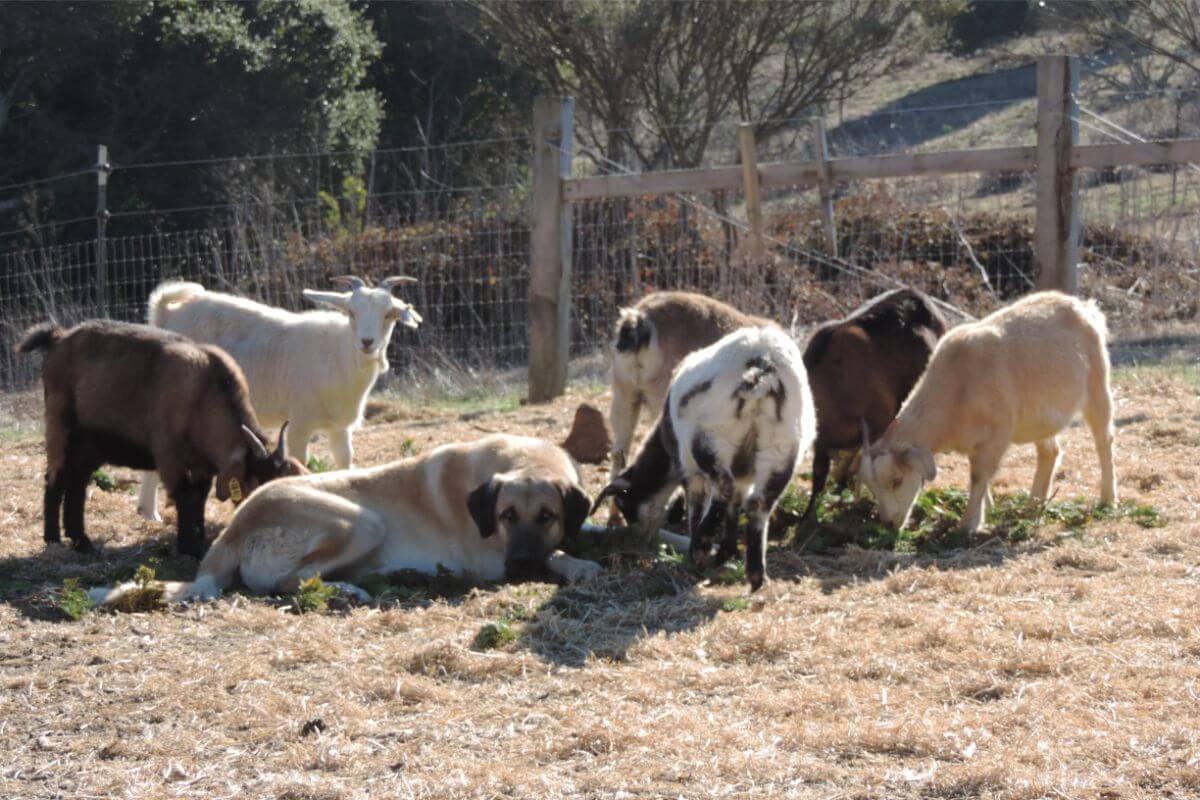

The Anatolian Shepherd Dog is a large and powerful livestock guardian breed originating from Turkey, where it has been protecting flocks for centuries. Known for its independence, intelligence, and unwavering loyalty, the “Anatolian” is a natural protector, making it a reliable worker and a devoted companion for experienced owners.
Working
27 – 29 inches
80 – 150 pounds
11 – 13 years
| Country of Origin | Turkey |
|---|---|
| Bred For | Livestock Guarding |
| Known For | Large Size, Confidence, Protectiveness |
| Popularity | Moderate |
| Temperament | Intelligent, Calm, Observant |
| Activities | Guarding, Conformation Shows, Dog Sports |
The Anatolian Shepherd Dog traces its lineage back over 6,000 years to the ancient livestock guardian dogs of Mesopotamia. Originating in the rugged terrain of Anatolia (modern-day Turkey), this breed was developed to protect livestock from predators such as wolves, jackals, and bears. Its combination of size, strength, and endurance made it an indispensable partner for shepherds, who relied on their dogs to defend the flocks in harsh and remote environments.
The breed’s ancestors are believed to include mastiff-type dogs and sighthounds, a cross that resulted in a dog that is both powerful and agile. Over centuries, shepherds in the region selectively bred the dogs for their working ability rather than for their appearance, resulting in a highly functional breed capable of withstanding extremes of climate and prolonged periods of activity.
In Turkey, the breed is known as the “Çoban Köpeği,” which translates to “shepherd’s dog.” There, it remains a vital part of rural life, guarding sheep and goats from threats in vast, open pastures. Unlike herding breeds, the Anatolian Shepherd does not move livestock but patrols the perimeter of the flock instead, often working independently without direct supervision.
The breed was introduced to the United States in the 1950s, primarily for use as a livestock guardian in large-scale farming operations. Its reputation for being an effective, low-maintenance protector of livestock quickly grew, and in 1970, a breed club was formed to promote and preserve its working capabilities. The Anatolian Shepherd Dog gained recognition by the American Kennel Club (AKC) in 1996, where it is part of the Working Group.
Today, the Anatolian Shepherd remains a popular choice for farmers and ranchers seeking a dependable guardian for their livestock. While still primarily a working breed, its intelligence and loyalty have also made it a cherished companion for experienced dog owners who can provide the structure and leadership this independent breed requires. Despite its rising popularity, the breed retains its strong guardian instincts and is best suited to environments where it can exercise its natural protective instincts.
Male Anatolian Shepherd Dogs typically stand around 29 inches tall at the shoulder and weigh between 110 and 150 pounds, while females are slightly smaller, measuring around 27 inches and weighing between 80 and 120 pounds.
The Anatolian Shepherd Dog is a large, powerful breed with a balanced and athletic build, designed for endurance and strength. The body is slightly longer than it is tall, with a deep chest and well-developed muscles, providing the physical framework for long hours of guarding and patrolling.
Texture: The Anatolian Shepherd Dog’s coat is short to medium in length (1 to 4 inches) and double-layered, providing protection from harsh weather conditions. The outer coat is dense, straight, and slightly coarse, while the undercoat is softer and thick, offering insulation. The coat is somewhat thicker on the neck and mane, with feathering sometimes seen on the ear fringes, legs, breeches, and tail.
| Standard Color | |
|---|---|
| Biscuit & White | y |
| Brindle | y |
| Fawn | y |
| Blue Fawn | y |
| Gray Fawn | y |
| Red Fawn | y |
| Liver | y |
| White | y |
| Standard Marking | |
|---|---|
| Black Mask | y |
| Brown Mask | y |
| Dutch Markings | y |
| Pinto | y |
| Pinto, Black Mask | y |
| Silver Mask | y |
A Note About Color: All color patterns and markings are equally acceptable for the Anatolian Shepherd Dog.

The tail of the Anatolian Shepherd Dog is long, thick, and set moderately high. It is carried low when relaxed and curls upward, often forming a ring when the dog is alert or in motion. The tail is left natural and undocked, reflecting the breed’s functional and traditional working heritage.
The Anatolian Shepherd Dog is an independent, intelligent, and protective breed best suited for experienced owners who understand its working-dog nature. These dogs require a large, secure environment, where they can exercise their guardian instincts, and thrive in active households with firm leadership and consistent training.
The Anatolian Shepherd Dog is generally a healthy and robust breed, with a lifespan of 11 to 13 years. Regular veterinary care, a balanced diet, and sufficient exercise are essential for maintaining overall health and well-being.
While the breed is known for its resilience, individuals can be prone to certain health conditions, including:
The Anatolian Shepherd Dog is a loyal and intelligent breed with a strong independent streak. Known for its natural protective instincts, the breed is deeply devoted to their families and take their role as guardians seriously.
While they are generally calm and affectionate with their loved ones, Anatolians can be reserved with strangers and cautious around unfamiliar animals. Early socialization is essential to help them differentiate between real threats and normal interactions, and their independent nature requires firm, consistent leadership from experienced owners.
The Anatolian Shepherd Dog requires a high-quality diet that meets its nutritional needs based on size, age, and activity level. Adult dogs typically consume 3 to 4 cups of dry dog food per day, divided into two meals to maintain a healthy weight and prevent bloat.
Puppies benefit from a diet formulated for large-breed growth, with daily meals divided into three to four portions to support steady development and avoid overfeeding. Monitoring weight and adjusting portions as necessary is important, as overfeeding can lead to obesity, which places strain on developing joints.
Anatolian Shepherd Dogs are intelligent and capable of learning, but their independent and strong-willed nature can make training a challenge for inexperienced owners. They respond best to positive reinforcement methods, such as treats, praise, and consistency, while harsh corrections can lead to distrust or resistance.
Early training and socialization are critical for teaching appropriate behavior and ensuring the dog is comfortable with various environments, people, and animals. As natural guardians, the Anatolian may be inclined to make decisions for itself, so establishing clear leadership and boundaries is essential for a well-behaved and manageable companion.
Anatolian Shepherd Dogs are a working breed with moderate exercise needs, primarily requiring opportunities to patrol and roam freely. They enjoy daily walks, secure yard time, and activities that simulate their guarding instincts.
| Energy Level | Moderate |
|---|---|
| Exercise Requirements | 2 Hours/Day (Minimum), Daily Walks, Vigorous Running, Regular Exercise |
These dogs are not as high-energy as some breeds but still benefit from physical and mental stimulation to prevent boredom. A large, secure space to move around is ideal, as they are not well-suited for apartment living or confined spaces.
The Anatolian Shepherd Dog’s double coat is relatively low-maintenance but requires regular brushing to control shedding, especially during seasonal coat changes. Weekly brushing is usually sufficient, while daily brushing may be needed during heavy shedding periods.
| Short to Rough, Thick | Short, Dense, Smooth, Shiney |
|---|---|
| Grooming Requirements | Weekly Brushing, Occasional Bathing, Routine Ear Cleaning, Periodic Nail Trimming, Regular Tooth Brushing |
Bathing is only necessary occasionally, as the breed’s coat naturally repels dirt. However, routine care such as nail trimming, ear cleaning, and dental hygiene should not be overlooked. Grooming needs are straightforward for Anatolians, making them manageable for most owners who are willing to commit to regular upkeep.
Anatolian Shepherd Dogs thrive in homes with ample space and a securely fenced yard where they can exercise their natural guarding instincts. They are best suited for rural or suburban settings, as they prefer larger areas to patrol and may not adapt well to city or apartment living.
These dogs are highly independent and protective, requiring experienced owners who can provide firm leadership and clear boundaries. While they are affectionate with their families, they are not overly clingy and prefer to remain alert and watchful, ensuring the safety of their home and loved ones.
Anatolian Shepherd Dog puppies are intelligent and independent, exhibiting early signs of their watchful instincts. Socialization and training are crucial during their formative months to help them grow into well-rounded, manageable adults capable of distinguishing between real threats and everyday interactions.
Caring for an Anatolian Shepherd Dog puppy requires a combination of proper nutrition, consistent training, and early socialization. A high-quality puppy food formulated for large breeds supports steady growth and helps to prevent issues with developing joints. Meals should be divided into three to four portions daily to avoid overfeeding.
Training should begin as soon as the puppy arrives home, focusing on basic commands, housetraining, and leash manners. Positive reinforcement methods work best, as the Anatolian puppy is intelligent but can also be strong-willed. Socializing the pup to new people, other animals, and varied environments is critical to reduce the likelihood of overly territorial or shy behaviors later in life.
Regular veterinary check-ups during the first year will keep tabs on the puppy’s growth and overall health. Grooming routines, such as brushing and nail trimming, should be introduced early to help the pup become accustomed to being handled. Structured play, short walks, and mental stimulation are ideal for meeting the Anatolian puppy’s activity needs while avoiding strain on developing joints.
The Anatolian Shepherd Dog is recognized by the world’s leading registries and kennel organizations, which categorize the breed into a specific Group based on its unique characteristics. This breed is recognized worldwide under the following Group designations:
| Organization | Group Designation |
|---|---|
| AKC (American Kennel Club) | Working |
| UKC (United Kennel Club) | Guardian |
| CKC (Canadian Kennel Club) | Working |
| ANKC (Australian National Kennel Council) | Utility |
| RKC (The Royal Kennel Club) | Pastoral |
| FCI (Fédération Cynologique Internationale) | Group 2: Pinscher and Schnauzer – Molossoid Breeds – Swiss Mountain and Cattle Dogs; Section 2.2: Molossoid Breeds, Mountain Type |
The ideal Anatolian Shepherd Dog is described by a Breed Standard that is approved by each of the world’s leading registries and kennel organizations. The Breed Standards for this breed may be found in the following links:
| Organization | Breed Standard |
|---|---|
| American Kennel Club | AKC Anatolian Shepherd Dog Breed Standard |
| United Kennel Club | UKC Anatolian Shepherd Dog Breed Standard |
| Canadian Kennel Club | CKC Anatolian Shepherd Dog Breed Standard |
| Australian National Kennel Council | ANKC Anatolian Shepherd Dog Breed Standard |
| The Royal Kennel Club | RKC Anatolian Shepherd Dog Breed Standard |
| Fédération Cynologique Internationale | FCI Anatolian Shepherd Dog Breed Standard |
Anatolian Shepherd Dog Club of America: Established in 1970, the ASDCA is the official parent club for the breed in the United States. The club promotes the preservation, education, and responsible ownership of the breed.
National Anatolian Shepherd Rescue Network: A US-based rescue organization specializing in rehoming Anatolian Shepherd Dogs and Anatolian mixes. The organization’s volunteers work closely with shelters, foster homes, and adopters to make sure each dog is placed in a suitable environment.
In addition to breed-specific rescues, local animal shelters and general rescue organizations may occasionally have an Anatolian Shepherd Dog available for adoption. Prospective adopters are encouraged to contact these organizations for guidance and resources to ensure a successful match.
Yes, Anatolian Shepherd Dogs shed year-round, with heavier shedding occurring during seasonal coat changes in spring and fall. Regular brushing helps to manage shedding and keeps the coat healthy.
No, Anatolian Shepherds are not hypoallergenic. Their shedding and dander can trigger allergies in sensitive individuals.
Anatolians typically live between 11 and 13 years. Proper care, regular exercise, and routine veterinary check-ups can help to support their longevity.
Yes, Anatolian Shepherds can be good family dogs, especially for families with large spaces and older children. They are loyal and protective but require experienced owners who understand their guarding instincts and independent nature.
Anatolian Shepherd Dogs are not excessive barkers but will bark when they sense potential threats to their home or territory. Their barking is usually purposeful, reflecting their role as alert and vigilant guardians.

Janis Rosenthal of Chevaliers du Roland shares decades of experience breeding vigilant, agile Anatolian Shepherd livestock guardians.

Janis Rosenthal is breeder behind Chevaliers du Roland. Read about the kennel’s beginnings, the puppies, and much more!

Lesley Brabyn is the breeder behind Timaru Kennels. Read about the kennel’s beginnings, the sires, the dams, the puppies, and much more!
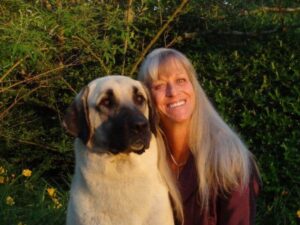
Interview with Breeder/Owner Handler Nancy Wargas – I stumbled onto Anatolian Shepherd Dogs while showing Quarter Horses at The All-American
The best way to ensure a long and happy relationship with a purebred dog is to purchase one from a responsible breeder. Not sure where to begin?
Contact the National Parent Club’s Breeder Referral Program, which is listed on the AKC Breeder Referral Contacts page.
